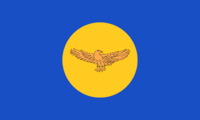Difference between revisions of "Byasanese language"
| Line 22: | Line 22: | ||
Byasanese and its sister languages split off from the primary [[Shan languages|Shan]] branch of the Byasa-Silvitic family some time in the 500s BCE after proto-Monsilvan peoples who had migrated into the area of modern Byasa lost contact with their related groups in the area of modern [[Monsilva]]. The orthography of Byasanese was set in stone in the 15th century, however modern spoken Byasanese has drifted away from this antiquated form of the language. | Byasanese and its sister languages split off from the primary [[Shan languages|Shan]] branch of the Byasa-Silvitic family some time in the 500s BCE after proto-Monsilvan peoples who had migrated into the area of modern Byasa lost contact with their related groups in the area of modern [[Monsilva]]. The orthography of Byasanese was set in stone in the 15th century, however modern spoken Byasanese has drifted away from this antiquated form of the language. | ||
| + | |||
| + | == See also == | ||
| + | {{Byasa topics}} | ||
Latest revision as of 11:46, 21 April 2024
| Byasanese | |
|---|---|
| Native to | Byasa |
| Ethnicity | Byasanese |
Native speakers | 23 million (2022) |
Byasa-Silvitic
| |
Early form | Proto-Nanlho †
|
| Byasanese script | |
| Official status | |
Official language in | |
Recognised minority language in | |
| Language codes | |
| ISO 639-1 | Ba |
| ISO 639-2 | Bya |
| ISO 639-3 | Bya |
The Byasanese language (བྱ་ས་སྐད; GEU: by-sa skad) is the second largest language in the Byasa-Silvitic language family and the largest member of the Nanlho branch. It is spoken natively by the Byasanese population of Byasa and is one of the nation's official languages. Approximately 23 million people are fluent in Byasanese. Byasanese is an official language of COEC.
Byasanese and its sister languages split off from the primary Shan branch of the Byasa-Silvitic family some time in the 500s BCE after proto-Monsilvan peoples who had migrated into the area of modern Byasa lost contact with their related groups in the area of modern Monsilva. The orthography of Byasanese was set in stone in the 15th century, however modern spoken Byasanese has drifted away from this antiquated form of the language.
